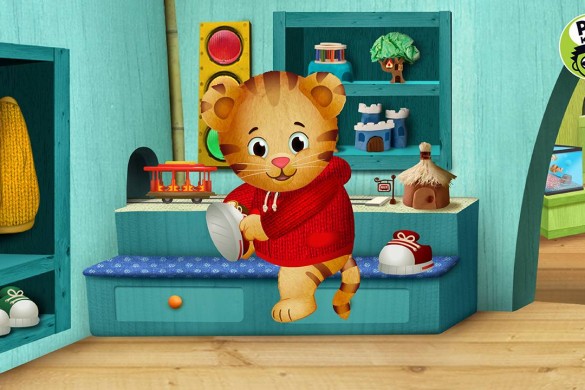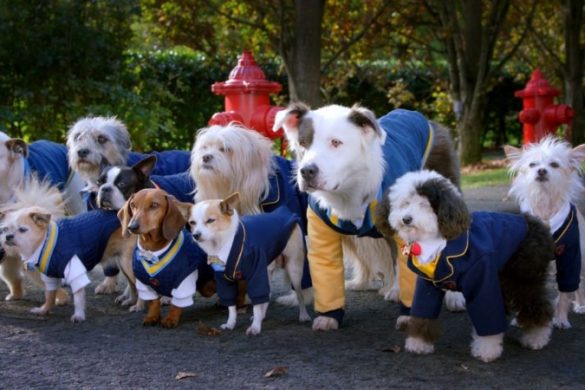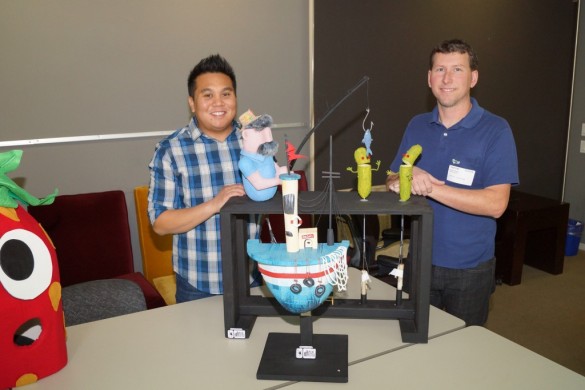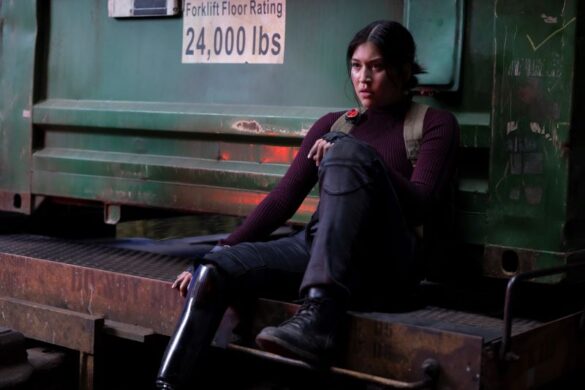“Turning Red” isn’t just another coming-of-age film. The iconic landmarks and fun Easter eggs hidden in the movie make it a love letter to director Domee Shi’s hometown of Toronto, Canada. In the film, Meilin Lei, is a confident but dorky 13-year-old who learns that she turns into a giant red panda whenever she gets to excited or stressed. To complicated matters, her overprotective mother, who watches over her like a hawk, adds additional pressures and further embarrasses in front of her friends.
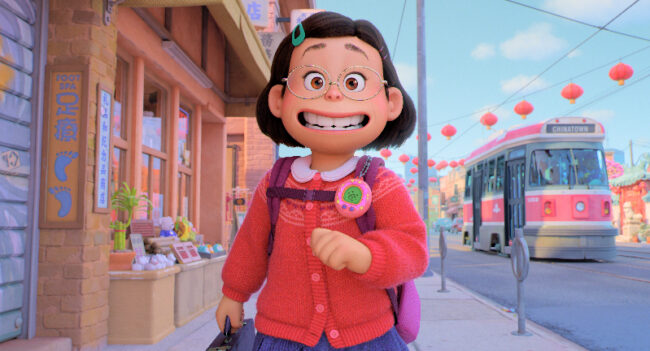
But as much as the story is about those friendships, “Turning Red” explores Toronto, Canada in ways only Pixar can.
“When we watch the movie, we get to see the set, right and see, like, you know, Toronto, not have the Rogers Center,” Maitreyi Ramakrishnan said who voices Priya, one of Meiling’s best friends, said. “That’s a throwback. I mean, I’m 2001, not a 90s kid at all. But it was still really cool to see how it’s like, okay, this is where I grew up. Like it’s Toronto, and, I can tell when we were like, in Spadina versus Kensington Market.”
“I knew exactly the corner. I saw in the opening montage open on the corner was for Spadina and Dundas,” Oh said. For those who may not be familiar with the area, the intersection of Dundas Street West and Spadina is the center of Toronto’s second-oldest Chinatown.
But those nods to Toronto aren’t the only Easter eggs hidden in “Turning Red.” And I am not just talking about “Bao,” Luxo, the Pizza Planet truck, and references to future films. Because the film is also a love letter to Toronto, Canadians will be quick to point out some of the more subtle references to the province. “I like the subtle references of like, like, you know, at one point in the movie we see a blue jay, and I’m like, ‘Oh, I see what you’re doing. Toronto Blue Jays, I get it.’ Or even like the young boys wearing like a purple basketball jersey, ‘It’s like, oh, okay, I see what you’re doing, that’s the Toronto Raptors.”
And the nostalgia and fashion trends aren’t the only visual pieces. “Turning Red” stays true to its setting by removing any references to social media or heavy use of smartphones. “They’re not on their phones the entire time,” Chaing said. “Yeah, that is true. I think nowadays if you were to create that story, but in 2022, it would be completely different.”
Of course, with Toronto, Canada being such a melting pot, Shi made sure that diversity was also a part of the film. “But I would say the thing that really excites me is the diversity of like, around characters, I think they did a great job,” Ramakrishnan said. “They’re there. They exist. Because yeah, how it is, and it’s normal. Nobody’s pointing it out every two seconds.”
And the idea of representation means a lot for those who feel marginalized and underseen. But that also goes for those who may have medical conditions “In the teaser trailer that came out, you could see in the background, a girl who had diabetes, and like, I was like, scrolling through my Tik Tok and like, people noticed that and there were people like, ‘oh my gosh, this is really cool.’ Ramakrishnan said. “That wasn’t the focus of the whole movie. That was just normal. And I think that’s really cool. Being able to see people’s reactions to that makes me feel so good. I’m like, ‘Oh, I like I’m so glad that you notice that.'”
Of course, “Turning Red” is also about the relationship between a mother and daughter. And Shi brings a tremendous amount of authenticity to the feature by having a cast that’s lived the experience. “I’m also not afraid of that concept of Tiger Mom. I mean, I love my mom. And she’s a fierce, fierce person. Tiny, tiny, but fierce,” Oh said. The actress mentioned a quote her mother told her that she had to post on Instagram because it was so unbelievable. “And it was. Basically, she said I’m not joking, I’m not joking, ‘If only you were neater, I would love you more,'” Oh said.
Oh added, “So I happen to have a really good relationship with my mom. And I know not everyone does. I can’t stop her from being herself. And I’m not going to stop, and I’m going to enjoy something I do, which is going to show what she wants me to do because that’s just not me. But there within that is that pull that we are always having. I think with our mothers and with our Asian mothers that it’s very, very difficult to satisfy them.”
“Yeah, for me. Well, after watching the movie, my mom and I looked at each other like, ‘this is really similar,” Chaing said. “There’s so many odds and really weird coincidence. First of all, my mom’s middle name is Ming. There’s no way they could have known that.”
“My favorite animals were actually red pandas before the whole project even started before I was even introduced,” Chaing continued. “But the main thing is that my mom actually calls me Mei Mei before this project because Mei Mei means little sister in Chinese. And so when it came to a point where everyone called Mei Mei, even the people who were younger than me, which you’re not supposed to do. So when she goes, I’m perfect little Mei Mei. I’m like, ‘Hey, that I literally went through that.'”
“Turning Red” may have a message about friendship, sisterhood, and mothers and daughters that should resonate with everyone. But for Chaing, she connected with Meiling’s determination and drive, and she hopes that her character serves as an inspiration to other young girls. “I feel like she has such a drive to when she sets her mind on something she goes for. She doesn’t go like she doesn’t half-assed,” she said. “She puts all her time and energy to make sure she gets her point across or whatever and bull she has. Also, the fact that she goes through changes is something that everyone goes through in their lives, especially puberty. It’s such a messy and weird and awkward time that I literally went through when I was during the duration of recording for Pixar. And I think I hope people admire what she goes through and how she deals with it.”
“Turning Red” launches exclusively on Disney+ on March 11, 2022.


